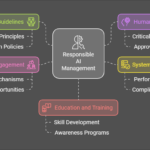Revolutionizing Project Management: How Machine Learning is Transforming Project Lifecycle Management
The Evolution of Project Management in the Age of Machine Learning
As both a project management practitioner and AI specialist, I’ve witnessed firsthand how machine learning (ML) is fundamentally reshaping how we manage projects. Gone are the days of relying solely on historical data and gut feelings. Today’s project lifecycle management is becoming increasingly intelligent, predictive, and data-driven.
Understanding Machine Learning’s Role in Project Management
The Traditional vs. ML-Enhanced Project Lifecycle
Traditional project management often follows a linear path with limited ability to predict outcomes or adapt to changes. Machine learning introduces a dynamic element that transforms each phase of the project lifecycle.
Key Areas of ML Impact
- Project Planning and Estimation
- Resource Allocation
- Risk Management
- Quality Control
- Stakeholder Communication
How Machine Learning Transforms Each Project Phase
Initiation Phase
- Automated feasibility analysis
- Intelligent stakeholder mapping
- Historical project pattern recognition
Planning Phase
- ML-powered effort estimation
- Resource optimization algorithms
- Predictive risk assessment
Execution Phase
- Real-time progress monitoring
- Automated issue detection
- Dynamic resource reallocation
Monitoring and Control
- Predictive analytics for timeline management
- Automated quality assessments
- Early warning systems for potential issues
Closure Phase
- Automated lessons learned analysis
- Intelligent project documentation
- Predictive insights for future projects
How to Implement ML in Your Project Lifecycle: A Practical Guide
Let me share a step-by-step approach based on my experience implementing ML solutions in project management.
Step 1: Assessment and Preparation
- Data Audit
- Inventory existing project data
- Identify data quality issues
- Define data collection needs
- Tool Evaluation
- Assess current PM tools
- Identify ML integration opportunities
- Review available ML solutions
Step 2: Implementation Strategy
Phase 1: Foundation (Weeks 1-4)
- Data Collection and Preparation
- Set up data gathering mechanisms
- Clean historical project data
- Establish data governance protocols
- Team Training
- Basic ML concepts introduction
- Tool-specific training
- Process change management
Phase 2: Initial Implementation (Weeks 5-8)
- Start with One ML Feature
- Choose a high-impact, low-risk area
- Implement predictive estimation
- Monitor and adjust
Real-World Example: Implementing ML in Project Estimation
Let’s walk through a practical example of implementing ML for project estimation:
Initial Setup
- Data Preparation python
# Example ML model preparationhistorical_data = collect_project_metrics()features = ['scope', 'team_size', 'complexity']target = 'completion_time'
- Model Training
- Use historical project data
- Train on completed projects
- Validate against recent projects
Implementation Process
- Data Collection (Week 1)
- Gather historical project metrics
- Clean and normalize data
- Identify key features
- Model Development (Week 2)
- Select appropriate ML algorithms
- Train initial models
- Perform validation testing
- Integration (Week 3)
- Connect with PM tools
- Set up automated data flows
- Configure alerts and reports
- Testing and Refinement (Week 4)
- Run parallel estimates
- Compare ML vs. traditional results
- Fine-tune parameters
Best Practices for ML-Enhanced Project Management
Data Quality Guidelines
- Ensure consistent data collection
- Implement data validation
- Regular data cleaning and updating
Integration Best Practices
- Start with pilot projects
- Gradual feature rollout
- Continuous feedback collection
Measuring Success: KPIs for ML-Enhanced Projects
Quantitative Metrics
- Estimation accuracy improvement
- Resource utilization rates
- Risk prediction accuracy
- Project completion time reduction
Qualitative Indicators
- Team satisfaction levels
- Stakeholder confidence
- Decision-making speed
- Quality of project outcomes
Common Challenges and Solutions
Challenge 1: Data Quality Issues
Solution: Implement automated data validation and cleaning pipelines
Challenge 2: Team Resistance
Solution: Phased implementation with extensive training and support
Challenge 3: Integration Complexity
Solution: Start with standalone ML features before full integration
Future Trends in ML-Powered Project Management
Emerging Technologies
- Natural Language Processing for project documentation
- Computer Vision for physical project monitoring
- Reinforcement Learning for resource optimization
Future Capabilities
- Autonomous project scheduling
- Advanced anomaly detection
- Real-time project health prediction
Conclusion: Embracing the ML Revolution in Project Management
Machine learning isn’t just changing project lifecycle management—it’s revolutionizing it. The key to success lies in thoughtful implementation and maintaining a balance between automated intelligence and human expertise.
Remember: The goal isn’t to replace project managers but to enhance their capabilities and free them to focus on strategic decision-making and team leadership.
Share your experiences with ML in project management in the comments below. How has machine learning transformed your project lifecycle management?





Leave a Reply